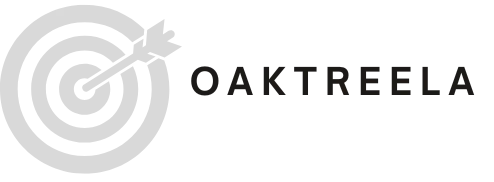Table of Contents
ToggleBuying a home can feel like trying to find a unicorn in a haystack. With soaring prices and hefty down payments, many potential homeowners are left scratching their heads. But what if there was a way to turn your existing home equity into a golden ticket for that dream house? Enter the Home Equity Line of Credit, or HELOC, the not-so-secret weapon for savvy buyers.
Understanding HELOCs
HELOCs serve as a valuable financial tool for homeowners. They enable individuals to access their home’s equity to finance significant expenses like home purchases.
What Is a HELOC?
A Home Equity Line of Credit (HELOC) represents a revolving credit line. This financial product allows homeowners to borrow against their property’s equity. Equity reflects the difference between a home’s current market value and the remaining mortgage balance. Unlike traditional loans, HELOCs provide flexibility, allowing borrowers to withdraw money as needed. This arrangement often features lower interest rates compared to unsecured loans.
How a HELOC Works
A HELOC works similarly to a credit card. Homeowners can draw funds up to a specified credit limit during the draw period. Typically, this period lasts five to ten years. During this time, interest is paid only on the amount used, not the total credit limit. After the draw period, borrowers enter the repayment phase, where they pay both principal and interest. Most lenders base the credit limit on a percentage of the home’s appraised value, making it essential to understand this key calculation.
Benefits of Using a HELOC for a Down Payment

Using a Home Equity Line of Credit (HELOC) presents several advantages for prospective homeowners. These benefits can significantly ease the home buying process in challenging market conditions.
Access to Equity
Accessing home equity through a HELOC allows homeowners to leverage their investment. Funds drawn from this line of credit can cover substantial expenses, such as a down payment on a new home. The equity available typically reflects the current market value minus the remaining mortgage balance. Homeowners enjoy the flexibility of using only the amount necessary without the need for a lump sum withdrawal. Quick access to these funds can expedite the home shopping process, enabling buyers to act fast in competitive markets.
Lower Interest Rates
Lower interest rates associated with HELOCs make them an appealing option for funding a down payment. These rates often trail behind those of personal loans and credit cards, allowing homeowners to save on borrowing costs. Borrowers tend to pay interest only on the amount utilized, further enhancing affordability. With favorable terms, financing a home purchase becomes more manageable, freeing up funds for other essential expenses. Taking advantage of a HELOC’s reduced rates can pave the way for smart financial decisions when entering the housing market.
Risks of Using a HELOC for a Down Payment
Utilizing a HELOC for a down payment carries inherent risks. Market fluctuations can significantly impact home values, potentially reducing equity. Homeowners may find themselves owing more than their property is worth if market conditions turn unfavorable. Additionally, adjustments in interest rates can worsen the financial burden, leading to increased monthly payments.
Market Fluctuations
Market fluctuations can be unpredictable and have lasting effects on property values. An economic downturn often results in decreased home prices, limiting equity accessibility. Homeowners using a HELOC might face a situation where their property’s market value drops below the amount owed on the loan. Selling the home to repay the HELOC could become challenging, as lower prices may not cover existing debt. Such scenarios necessitate careful consideration before leveraging home equity for a down payment.
Increased Debt Load
Increased debt load poses another significant risk when using a HELOC for a down payment. Borrowers may face heightened financial pressure with additional payments alongside their primary mortgage. Monthly obligations can accumulate quickly, impacting budget management. The reliance on borrowed funds can lead to stricter financial constraints if other expenses arise. Tying a substantial portion of equity to a new mortgage may result in long-term financial instability.
Alternatives to Using a HELOC for a Down Payment
Exploring other options for a down payment can offer more financial stability. Using savings and investments often presents a straightforward path.
Savings and Investments
Savings accounts typically provide a safety net for future purchases. Homebuyers can lean on accumulated savings, as this approach enables them to avoid additional debt. Investing in stocks or bonds can build wealth over time, helping to reach down payment goals. Many financial advisors recommend setting aside specific amounts regularly to ensure ample funds when needed. Combining these strategies can result in a robust financial foundation without the risks tied to borrowing against home equity.
Traditional Loans
Traditional loans feature structured repayment plans, making them easier to manage. Borrowers can select fixed or variable interest rates that fit their budget. These loans often require no collateral, unlike HELOCs, providing a secure alternative for those with good credit. Conventional lenders also offer competitive terms, accommodating various financial situations. Exploring different loan types, like FHA or VA loans, introduces other benefits tailored to distinctive borrower needs. Each option presents a unique pathway to achieve homeownership while avoiding the complexities of a HELOC.
Using a HELOC for a down payment can be a strategic move for homeowners looking to enter the housing market. It offers flexibility and lower interest rates compared to traditional financing options. However it’s crucial to weigh the associated risks carefully. Market fluctuations and rising interest rates can impact financial stability and complicate repayment.
For those considering this route it’s essential to assess personal financial situations and explore alternatives like savings or traditional loans. Ultimately informed decision-making will pave the way for successful homeownership while minimizing potential pitfalls.







